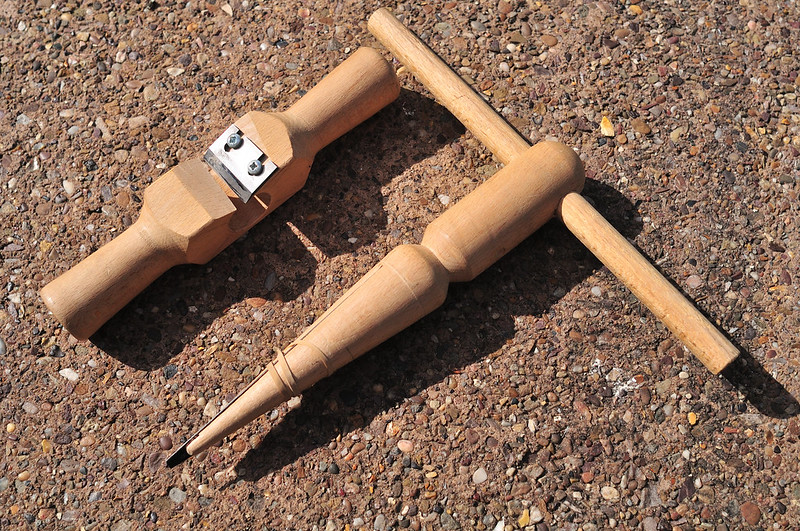following the spectacular success of my first saw bench build (see projects section) I am making another one!
This time I will be needing a tapered reamer and tenon cutter, which I will endeavor to make. I have some questions about how to make the tools, so please chip in with info and enjoy the forthcoming ineptitude.
I am following this report by Jennie Alexander:
http://www.greenwoodworking.com/SawStee ... eamerPlans
I dug out an old keyhole saw and it is happily the recommended taper of 6 degrees - according to Jennie there is no disadvantage to leaving the tooth edge, but I ground the toothed side flat anyway.
For the body of the tool I am using half of an oak baluster, the other of half of which I used to make some winding sticks. As per the pics below I have, after a fashion, created a roughly conical shape. I did this by ripping the baluster to 1 1/8'' and then using a plane to create the appropriate taper on 4 sides. I then planed off the arrises to create an octagon and finally used a block plane to refine the shape. It is not very precise but I am hoping this will not matter because it will ultimately be the saw blade that shapes the hole.
Cock-up #1 was that I cut the tool to length having created the initial 4 sided taper so the narrowest end was 3/8'', forgetting that as I planed more facets the thin end got thinner, the result being that the tool will now be only 11'' long (rather than the 16'' I was aiming for). Is this a reason to start again?
Question 2 - is there a better way to hold the work piece when shaping the taper? (c.f my heath robinson set up with hand screw)
Question 3 - any tips on how to mark out and cut the kerf to receive the saw blade?
cheers

This time I will be needing a tapered reamer and tenon cutter, which I will endeavor to make. I have some questions about how to make the tools, so please chip in with info and enjoy the forthcoming ineptitude.
I am following this report by Jennie Alexander:
http://www.greenwoodworking.com/SawStee ... eamerPlans
I dug out an old keyhole saw and it is happily the recommended taper of 6 degrees - according to Jennie there is no disadvantage to leaving the tooth edge, but I ground the toothed side flat anyway.
For the body of the tool I am using half of an oak baluster, the other of half of which I used to make some winding sticks. As per the pics below I have, after a fashion, created a roughly conical shape. I did this by ripping the baluster to 1 1/8'' and then using a plane to create the appropriate taper on 4 sides. I then planed off the arrises to create an octagon and finally used a block plane to refine the shape. It is not very precise but I am hoping this will not matter because it will ultimately be the saw blade that shapes the hole.
Cock-up #1 was that I cut the tool to length having created the initial 4 sided taper so the narrowest end was 3/8'', forgetting that as I planed more facets the thin end got thinner, the result being that the tool will now be only 11'' long (rather than the 16'' I was aiming for). Is this a reason to start again?
Question 2 - is there a better way to hold the work piece when shaping the taper? (c.f my heath robinson set up with hand screw)
Question 3 - any tips on how to mark out and cut the kerf to receive the saw blade?
cheers


































